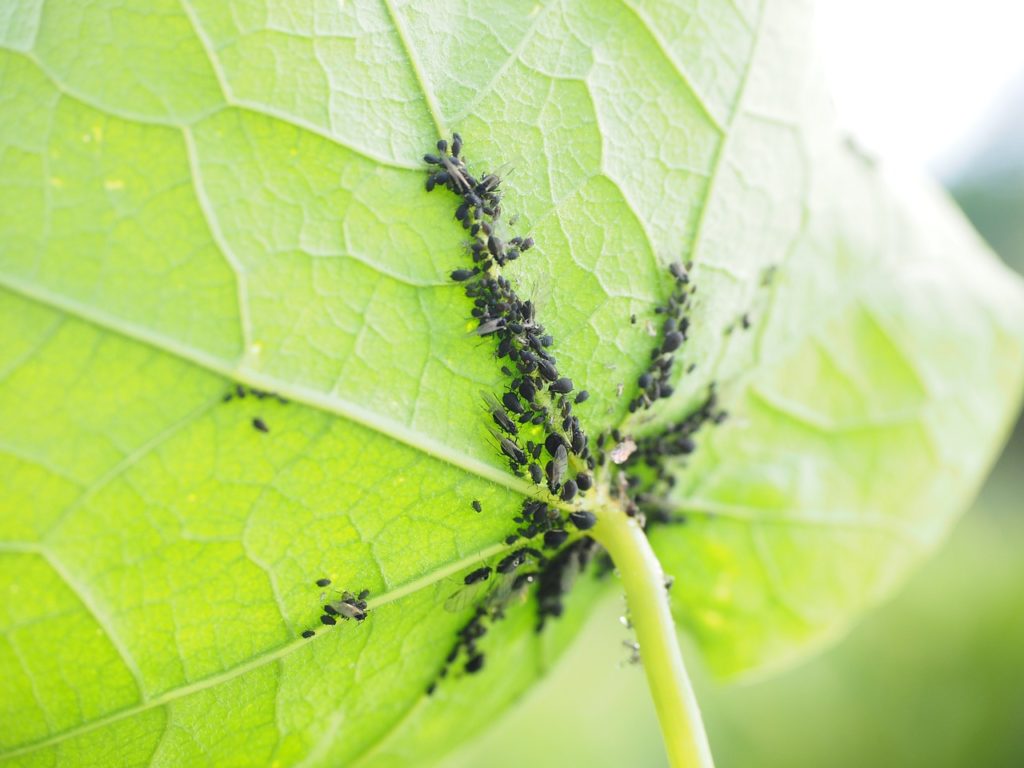Gall diseases are common on many trees and shrubs. Galls are abnormal swelling growths that form on the leaves, twigs, branches, roots, and flowers of plants. There are myriad gall producers, some of which are host or tissue specific. The following examines the various types of gall producers, and the diseases associated with each.
Insects and Mites
Insect galls are highly distinctive plant structures that some herbivorous insects construct as micro-habitats. They are usually induced via a chemical that the insect injects into the plant. This process can occur when insects are in both their larval and adult stages. Insects typically invade plants through wounds created by storm damage, pruning cuts, or mechanical injuries.
Galls serve as the habitat and food source for the insect. The interior of the galls contains a mixture of edible starch, and other tissues, which insects feed on. Some galls concentrate resources from surrounding plant tissue, using them to hasten the insect’s growth.
Galls may also provide the insect with shelter from predators. After the galls are formed, the larvae develop within its confines until they are fully mature. Meristems, where plant cell division occurs, tend to be the primary site of galls. They may also be found on leaves, stalks, branches, buds, roots, flowers, and fruits.
Inductor Insects
Gall-inducing insects include gall wasps, gall midges, gall flies, scale insects, Agromyzidae aphids, and psyllids. These types of insects are sometimes host, or tissue specific. The following describes some of the more common gall-inducing insects:
Ash Flower Gall
Ash flower galls are caused by a small mite. They result in an irregular distortion of male flowers. Galls are initially green, but later become desiccated and turn brown.
Ash Midrib Gall
Ash midrib galls are succulent, and have thick walls. They grow between ½ inch and one inch long. One or more small maggots, the larval stages of tiny flies called midges, are contained within a small cavity of each gall. Female midges lay their eggs in young leaflets during early spring. Gall formation begins shortly thereafter.
Elm Cockscomb Gall
Elm cockscomb galls are caused by an aphid. Aphids have a complex life cycle; galls form on elm in early summer, followed by grass roots in mid to late summer. Galls are about one inch long, and ¼ inch high. Aphids may be seen through a slit-like opening in the underside of the gall. As galls age, they dry out and harden, eventually turning brown. Elm cockscomb galls do not cause significant damage to trees.
Hackberry Leaf Gall
Hackberry leaf galls form on account of a small, aphid-like insect with distinct sucking mouthparts collectively referred to as a jumping plant louse. Adults overwinter under the bark crevices of hackberries. As leaves emerge in spring, females lay their eggs. The nymphs that hatch from these eggs cause an abnormal growth to develop on the plant. This abnormal growth forms a distinct pouch, which contains the nymphs. Nymphs remain inside the galls until they emerge as adults in late summer or early fall. Insects produce one generation each year. Heavy infestations can result in premature leaf drop.
Honeylocust Pod Gall
Honeylocust pod galls are caused by a midge. Infested leaves develop globular, or pod-like distortions that contain one or more small maggots. Galls begin to form when females lay eggs in young leaflets. Five or more generations are produced each year. Affected leaves often drop prematurely. Prolonged infection can kill small branches. New shoots will develop at the base of dead twigs, often causing trees to become misshapen. The ‘Sunburst’ cultivar is especially susceptible to this insect.
Horned Oak Gall
Horned oak galls are common on red and pin oaks. They are caused by a wasp called Callirhytis cornigera. Wasps oviposit eggs on veins along the underside of leaves. Small, oblong leaf galls appear on leaves the following spring. The larvae approach full size during the second or third year. During this period, the galls turn brown, with spherical galls forming on twigs.
Maple Bladder Gall
Maple bladder galls are often seen as bright red bead-like growths on the upper leaf surfaces of silver and red maple. An eriophyid mite is the causal agent. Galls are initially green, later turning red. By the end of summer, they may deepen to black. Mites feed inside of the galls. By fall, mites have vacated the foliage to overwinter on the twigs, usually at the base of the buds.
Oak Apple Gall
Oak apple galls occur when chemicals are injected by the larvae of several kinds of gall wasp. Atrusca bella is the most common gall wasp in western North America. Amphibolips conflluenta can be found in eastern North America. In Europe, Biorhiza pallida is the most widespread gall wasp. Adult females lay a single egg in developing leaf buds. Once they hatch, wasp larvae feed on the gall tissue that results from their secretions. The galls that form resemble small apples. They come in a variety of colors, ranging between brown, yellow, green, pink, and red.
Petiole and Stipule Galls:
Petiole and stipule galls are thick, globe-like galls that develop on leaf petioles and stems. Many of these galls are caused by insects called phylloxerans, which are similar to aphids. They produce one generation each year. Insects overwinter on the tree during the egg stage. Petiole and stipule galls are hard and woody. They may remain attached to the tree for several years.
Willow Shoot Galls
Willow shoot galls appear as swellings on shoots, twigs, or leaf petioles. They are caused by midges or sawflies. Galls increase in size during the insect’s larval stages. They cause no significant injury to willows.
Witchhazel Gall
Witchhazel galls are caused by an aphid. Aphids overwinter in eggs laid on the twigs of the plant. Each gall is produced by a single aphid, and later becomes filled with offspring. As the aphids feed, they cause conical galls to form on the upper side of the leaf. Mature aphids with wings emerge from the galls in late spring and early summer. They soon depart, migrating to nearby birch trees. During this period, the birch trees incur no significant damage. After several generations, the insects return to the witchhazels to lay their eggs.
Crown Gall
Crown gall is one of the most researched plant diseases. It is caused by a soil-inhabiting bacterium called Agrobacterium tumefaciens. More than 600 plant species in over 90 plant families are susceptible to this disease. Crown galls form on roots and stems. They occur most frequently at the root collar, which is the junction of the roots and the stem. Galls continue to enlarge as plants grow. This often results in stems and twigs becoming disfigured. Younger plants that form large galls, or numerous galls tend to be stunted, leaving them predisposed to environmental stressors.
Fungal Infections
Galls sometimes form on account of a fungal infection. One of the most common gall-inducing fungi is cedar-apple rust. Leaf galls resulting from fungal infections often resemble tiny clubs. Flower galls are more globular.
Nematodes
Nematodes are microscopic worms that reside in the soil. Certain nematodes can cause galls to form on the roots of susceptible plants. These galls become an integral part of the root. Some galls develop individually on hosts, often resembling small beads. Other galls appear as accumulations of fleshy tissue more than an inch in diameter. Many ectoparasitic nematodes cause root tips to swell.


